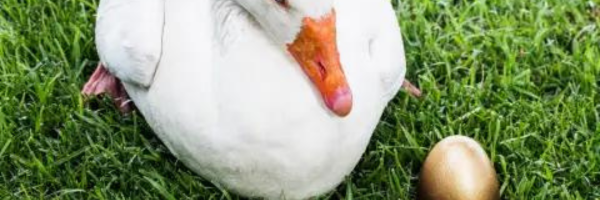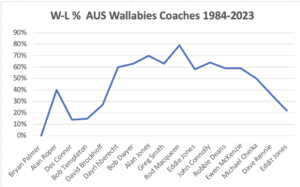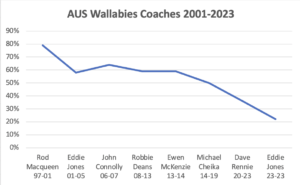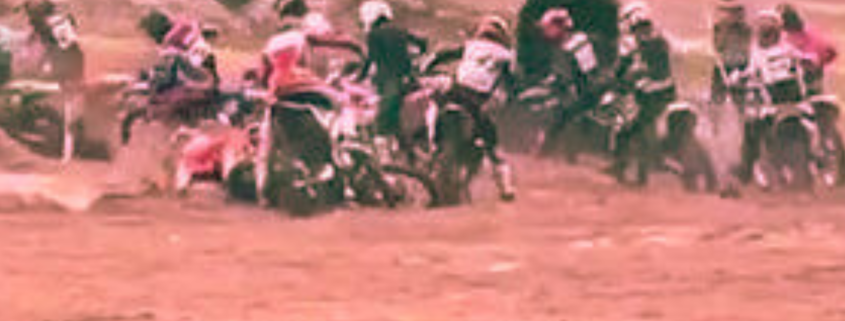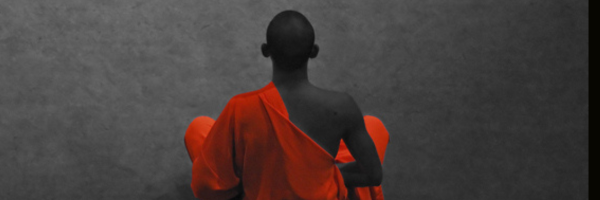What’s in a name? Pt 2 – Considering the bigger picture of physical preparation
As I share earlier during the 1980 I faced the challenge of adopting a job title, in a role that did not exist in Australia. Australia at that time had begun to model the national coaching system of Canada, which in that decade was one of the most highly funded coaching programs in the Western world due to the government funding leading up to their two decades of Olympic Games – the Montreal Summer Olympics in 1976 and the Calgary Winter Olympics in 1988.
However, neither the Coaching Association of Canada or the Australian Coaching Council provided any clarity, recognition or specific education for the role of physical training of athletes. The Canadians provided excellent education, including by their imported experts such as Hungarian Tudor Bompa, however to my knowledge there was no-one professionally physically training athletes in Canada or Australia in in 1980, so it was understandable that this gap in education and recognition existed.
I looked to dominant influences overseas and narrowed it down to two – the United States National Strength & Conditioning Association (NSCA) and an Eastern European perspective on athlete training by Tudor Bompa as outlined in his1983 book ‘The Theory and Methodology of Training’.
Ultimately, I chose the Eastern European approach as it resonated more with me than the American approach. However, it was not a simple add the word coach to the term ‘physical preparation’. I studied and reflected for years to develop my own approach to physical preparation.
I have consistently referenced the influence of Tudor Bompa. This professional and ethical referencing appears to have lost favour in the post 2000 internet and social media world, where at best you can hope for is a single ‘credit’ given, and then it is open season on ones’ original publishing’s.
…raised by Tudor Bompa in his classic book Theory and Methodology of Training: The Key to Athletic Success (first published 1983). This is an excellent text and I believe it should be in every coach’s library.…[1]
I have been influenced in how I define the physical qualities by the land-mark work of Tudor Bompa. His 1983 text Theory and Methodology of Training is a must-have in the professional library of every physical preparation coach. [2] [3]
My greatest influence in the area of structuring the physical qualities has been Tudor Bompa, and I encourage you all to purchase and study at least his 1983 (more recent editions) book, Theory and Methodology of Training. You will note that unlike certain US ‘authors’ of the post 2000 period, I consistently and respectively (not to mention ethically) reference and credit my sources of influence.….Ki
Not only was Tudor’s book one of the most influential books I have read, but I have also met Tudor on several occasions and shared the speaking platform with him. My goal is to be professional, ethical, and respectful of those who came before. I also aim to be gain a mutual respect manifested in a warm greeting when we next meet in person, in this life or the next. [4]
The aim of this article is to share the influences and the rationale that lead to my conclusions about physical preparation in context – considering the bigger picture of athlete preparation.
The bigger picture of athlete preparation
Before drilling deeper into the term physical preparation, I took a step back and sought to understand the bigger picture or content and structure of physical preparation with athlete preparation. Keeping in mind that my career has been exclusively about training the athlete, and typically elite athletes.
There are a number of significant differences between what Tudor promoted in his book and what I have settled upon.
My greatest influence in the area of structuring the physical qualities has been Tudor Bompa… However I didn’t leave my research at this. I have gone on and developed additional concepts, original definitions and new sub-qualities….Ki
Firstly, I noted that Tudor used the term ‘training factors’ to describe the components of ‘athletic performance’. It is a minor point, however I have instead used the term ‘components’.
Secondly, I noted that Tudor preferred ‘athletic performance’, including in the sub-title of his 1983 book. I elected ‘athletic preparation’. I have more focus on the process of preparation and belief performance is the product.
I believe the term ‘physical preparation’ is a better term. Athletic preparation another. [5]
These are arguable minor and subtle differences; however I believe it’s important to acknowledge the differences.
The third point of difference between what I have refined over the forty years since first being exposed to Tudor’s book is more significant – it is the ‘factors’ (Bompa’s word) or the ‘components’ (my preferred word) that contribute to athletic ‘performance’ (Bompa) or ‘preparation’ (King).
Here is the comparative list as published by Bompa and myself.
Table of respective ‘factors’ or ‘components’ used by Bompa and King
|
Bompa |
King |
||
| Physical preparation | Physical preparation | ||
| Technical preparation | Technical preparation | ||
| Tactical preparation | Tactical preparation | ||
| Theoretical preparation | Psychological preparation |
You will note that I used only three of Bompa’s four ‘factors’ and substituted ‘Theoretical’ for ‘Psychological’ in my four ‘components’. I also note that Bompa dedicated much less text (approximately 25%) to his ‘Theoretical preparation’ compared to the text dedicated to each of his other three ‘factors’. Literally interpreted one could conclude that he placed lesser importance on this factor. This is not how I approach ‘Psychoological preparation’ in that I do not treat it as a lessor factor.
Which leads to the fourth point of difference, and I suggest this points of difference have progressed upwards in significance as we work through them, meaning this point is of great significance.
I now direct attention to relative importance. Now I acknowledge that this is in part inferences, rather than stated. I say in part because Bompa did express his values in text:
“Physical preparation has to be considered as one of the most and in some cases the most important ingredient in training required to achieve high performance.” [6]
I take a literal interpretation that Bompa presented his four ‘factors’ in order of relative importance. Bompa’s list or sequence is not alphabetical.
Generally speaking, I believe that one should either present content alphabetically, to remove inference of relative value, or in a sequence that represents one’s values.
In the original 1999 version of our online course titled ‘Foundations of Physical Preparation’ [7] and in the original edition of the 2000 book of the same name [8] I presented the components alphabetically.
2.4 Athletic Preparation
Physical Preparation
Psychological Preparation
Tactical Preparation
Technical Preparation[9]
However, when I present components of athletic preparation reflecting a value set, I present a sequence that is different to Bompa’s and reflect the values around these ‘factors’ or ‘components that I have developed during the last five decades. We go into more depth about this in our the KSI Coach education program.[10]
There is one more sequence of the components of athletic preparation that I believe needs to be referenced here, and that is the individualized sequence of importance for any given athlete. The following is from my 2005 book ‘The Way of the Physical Preparation Coach’:
Following a review of all components that contribute to or influence success in athletic preparation, generally speaking we prioritize the training process to address the weakness ahead of the strength.
Once we know the needs of the sport, we review the abilities of the athlete/client in each of these athletic components (psychological, technical, tactical, and physical). Our physical preparation training program design will reflect the strengths and weakness we discover, by placing priority in training in the short term on the weakest component, provided we conclude that this is optimal in the long term planning of the athlete/client.[11]
Conclusion
In closing on this subject, I believe its warranted to add some additional caveats to this discussion.
The first caveat or footnote relates to the dangers of assuming or treating the athlete/client from a compartmentalized perspective. For example, a physical preparation coach seeking to optimize the performance outcomes through a narrow or predominant focus on physical preparation:
In general application, physical preparation is just one of many interconnected components of a human, and therefore all components should be recognized and addressed.
At the highest and most simplistic level, these include but are not limited to the mind, body and the spirit. Training a person from this holistic approach is more optimal and effective then training the body in isolation. [12]
The second footnote rises from this reality, that there is a physical overlap or residual implications affecting recovery in athletes who train technically and tactically for their sport:
Athletic preparation has been described as including a number of factors, one of which is physical preparation. Whilst training the physical qualities, it is important to remember that it is virtually impossible to separate the physical training from the other training qualities. Therefore the integration of the effect of the total training should always be considered when planning, conducting and evaluating the physical training. [13] [14]
The third footnote is that no-matter how much lip service[15] a physical coach may give to their ability to integrate all training, mastery of four components of athletic preparation is not achieved in a short period of time. It will take a lifelong approach to being a student combined with high volume of practical application with a large sample size of athletes in a multi-year approach to achieve mastery.
The physical preparation coach’s ability to effectively and optimally address physical preparation within the context of the total components of athletic preparation will be influenced by the coach’s mastery of each of these components.
Greater results will be achieved in physical training if the physical preparation coach has a mastery of aspects as they relate to the mind, body and spirit of the athlete. [16]
The aim of this article was to provide historical and contextual background to my conclusion I reached about physical preparation within the context of the bigger picture of athlete preparation. I acknowledge that for those working with general population, or those whose services are narrowed to less than the full components of athlete preparation, this information may have less meaning.
However, for those who seek to be the best they can be in service of the athlete, you may find more relevance in this discussion. What I cannot give you is the delayed gratification and the desire to remain a student (as opposed to seeking to be the teacher).
References
[1] King, I., 1997, Winning and Losing (Book)
[2] King, I., 2011, Legacy – Ian King’s Training Innovations (Course)
[3] King, I., 2013, Legacy – Ian King’s Training Innovations (Book)
Ki King, I., KSI Coaching Course, L1 Legacy (Course)
[4] I am not sure if the new age ‘author’ hiding behind the keyboard feels empowered to breach intellectual property because they don’t anticipate meeting the original author in person. Or is it a simple manner of a degradation of ethics and morality in this stage of history? Or perhaps it is the entitlement attitude of the younger generation – they believe they simply deserve to have the right to copy. And perhaps the desire to be perceived as signification, though more followers on social media is a factor Or perhaps it is a mix of all of the above.
Ki King, I., KSI Coaching Course, L1 Legacy (Course)
[5] King, I., 1997, Winning and Losing (book)
[6] Bompa, T., 1983, Theory and Methodology of Training (Book)
[7] King, I., 1999, Foundations of Physical Preparation (Course)
[8] King, I., 2000, Foundations of Physical Preparation (Book)
[9] King, I., 1999, Foundations of Physical Preparation (Course) – Lesson 2: Training Theory
[10] KSI Coach Education circa 1999 https://kingsports.net/courses/
[11] King, I., 2005, The Way of the Physical Preparation Coach, p. 29
[12] King, I., 2005, The Way of the Physical Preparation Coach, p. 29
[13] King, I., 1999, Foundations of physical preparation (Course)
[14] King, I., 2000, Foundations of physical preparation (book), p. 25
[15] Or social media posts
[16] King, I., 2005, The Way of the Physical Preparation Coach, p. 30-31




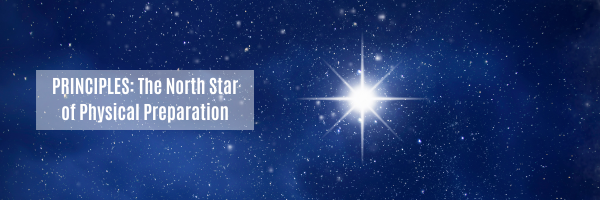

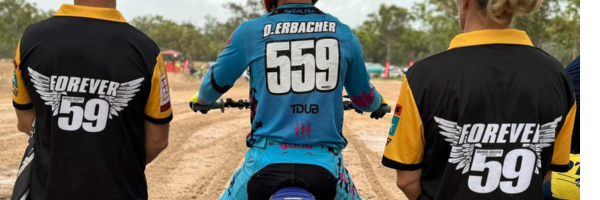
 Hunter Lawrence
Hunter Lawrence





 .
. 
